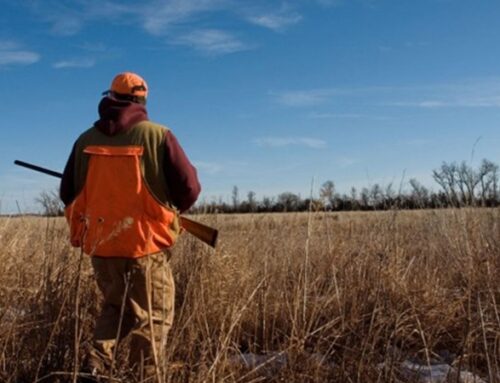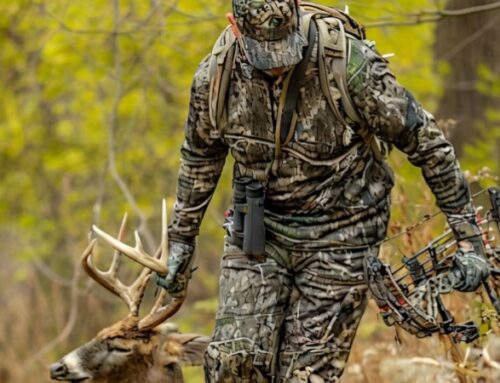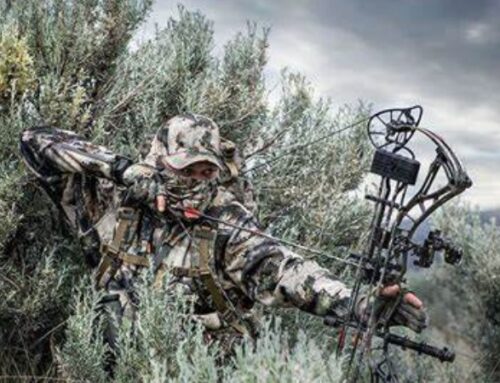With nearly 20 years of research and development and production of hunting suits, BOWINS Garment focuses on designing custom hunting wears, inclusding hunting jacket, heated hunting jacket, hunting vest and huntign pants, researching scene application and wearing experience, and providing humanized service.
Military and hunting camouflage look similar to the untrained eye. But what’s the difference? Why is it different? The following will be detailed elaboration and analysis
Camouflage for hunting and military use had a common purpose: to blend humans into their surroundings and thus avoid detection.
Let’s start by looking at the two recognized patterns, Realtree Xtra and MultiCam. We see that they are different – partly because they take very different approaches to design. For Realtree Xtra, the approach is imitation; For MultiCam, it is the mixing effect. It is understandable that they take different approaches, as each pattern applies to a distinct use case.
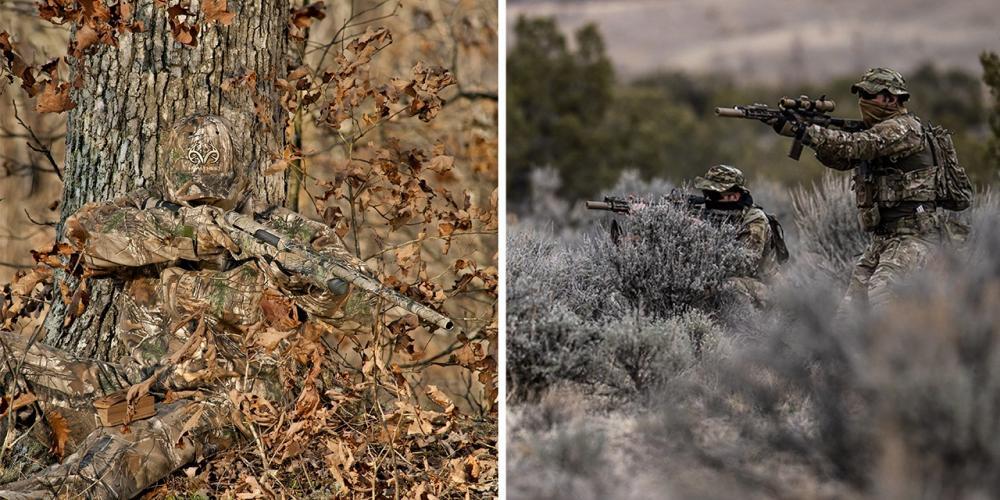
Realtree Xtra is primarily designed for hunters who will stay in one place and try to hide themselves from animals
MultiCam is primarily designed to break the contours of mobile operators in multiple environments, such as dense forests and urban areas, and is designed to work against human perception
Now let’s turn our attention to hunting camouflage and understand it better before comparing it head-on with military camouflage.
DIFFERENT TYPES OF HUNTING CAMOUFLAGES
MultiCam is primarily designed to break the contours of mobile operators in multiple environments, such as dense forests and urban areas, and is designed to work against human perception
Fast forward to the present. Hunting is no longer necessary for survival. It’s not that hunting has disappeared, because it hasn’t. Nor is it to imply that hunting will be uprooted and disappear any time soon, because it won’t.
But what is very different from the past is the use of camouflage. Hunters used not to hide themselves. It wasn’t until the second half of the 20th century that camo became significant for hunters
The history of hunting camo began in the late 1970s with the introduction of the Trebark pattern developed by Jim Crumley. Trebark quickly became popular, so much so that the market was soon flooded with a variety of camo hunting shirts, pants, vests, jackets, hats, and more.
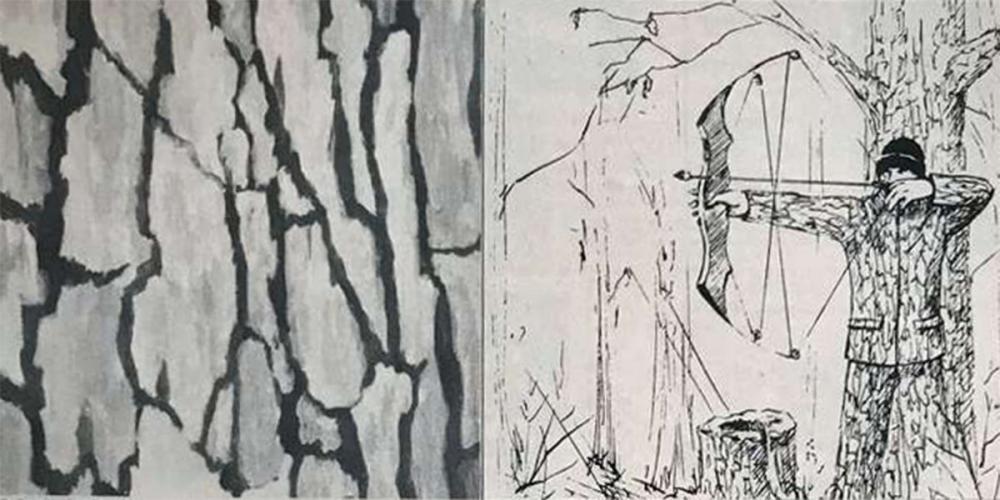
Artwork for Trebark camo AD that appeared in Archery magazine.
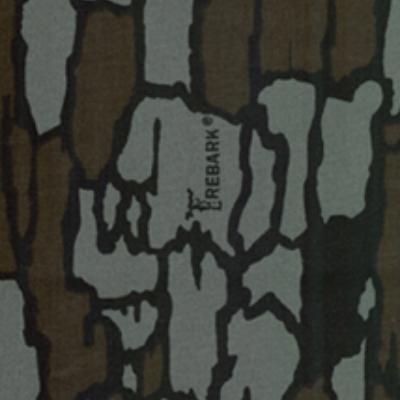
TREBARK CAMO
The idea behind Trebark was simple: to create a model that mimicked the forest vegetation of North America
This was done by experimenting with replicating various colors from photographs of trees. The pattern was named Trebark because it resembles the bark of major North American trees.
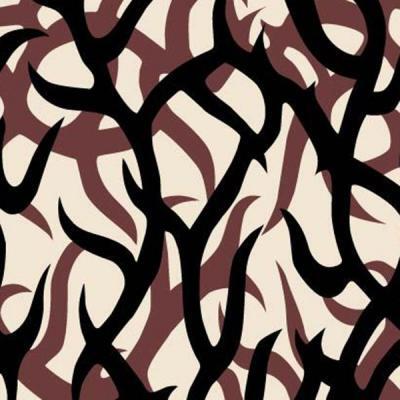
ASAT CAMO
ASAT is short for All Season All Terrain. It is similar to the French lizard camouflage pattern, but with more prominent lines.
The ASAT pattern itself consists of curved brown and black lines against a tan background. It works to break up the outline of the wearer.
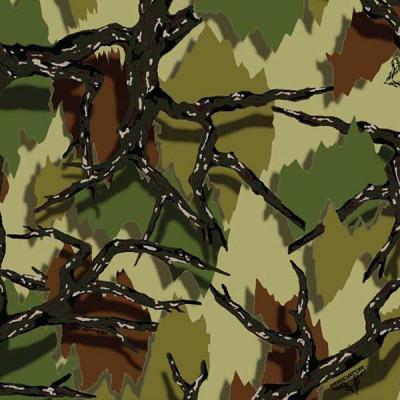
DECEPTION CAMO
Predator’s Deception series began a revolution, abandoning photographic realism in favor of high-contrast patterns
The company’s latest effort includes a new 3D-printed version that adds shading and more deep patterns.
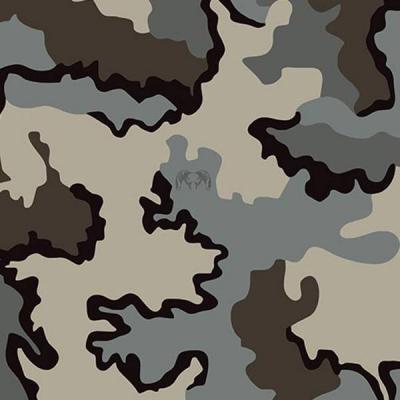
VIAS CAMO
KUIU vivier is designed for high-contrast environments above the tree line, with distinctive black lines and large macro elements that are effective at long distances. It looks like a mountain version of ERDL mode
THE “PREDATOR” REVOLUTION
A new era of hunter camouflage began when W.L. Gore bought Sitka, a major player in the hunting industry.
Stika is the creator of the Optifade hiding system, which represents a scientific breakthrough in human understanding of animal vision. Optifade also utilizes advanced computer generated pattern technology.
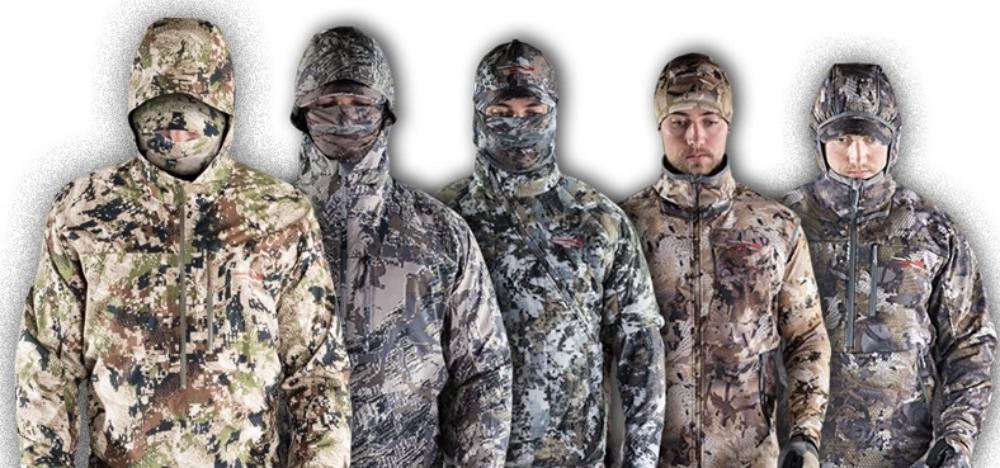
Sitka co-founder Jason Hairston decided to improve and refine Optifade’s design by leaving the company and starting KUIU. His methodological principles are not new to the hunting scene. However, the idea is high contrast.
On a trip to Africa, Hairston noticed some similarities between wild dogs and carnivores like snakes. He observed that they don’t mimic their surroundings, but are still hard to spot at a distance.
He finally figured out why. That’s because animals have a hard time transitioning from dark to light. This, he realised, was very effective at breaking the outline. Heston then translated this finding into a new method of camouflage patterns that has since become widely adopted
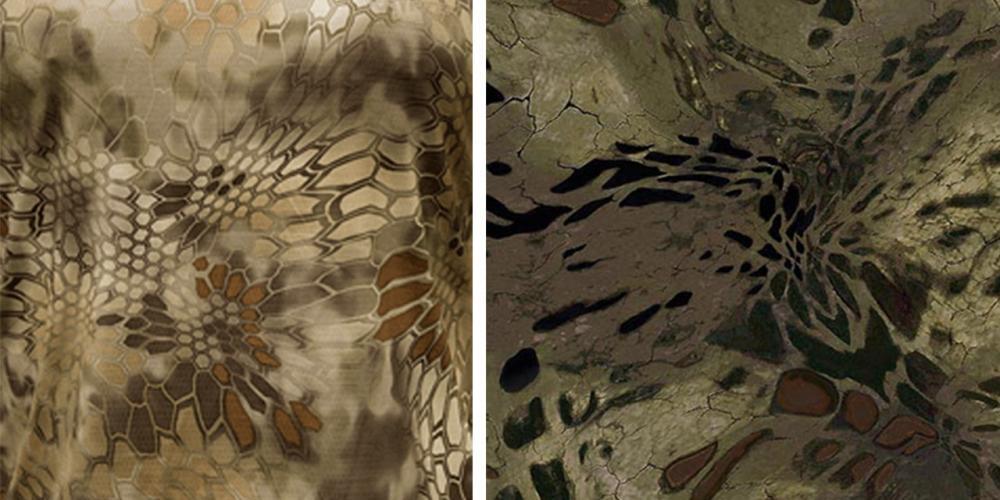
It’s easy to find inspiration for the high-contrast “predator” pattern in Kryptek’s Highlander(left) and Prym1’s Woodland(right) patterns.
WHAT IS THE DIFFERENCE?
A good camouflage system is to use the same tactics against the prey that they use to detect you. This is the difference between hunting camouflage and military camouflage.
But before going into detail, we should briefly discuss the environment and, more importantly, the methods used to detect humans or operators.
Military detection methods:
Visual, Sound, Near-infrared, Thermal
Hunting detection methods:
Visual, Sound, Scent
The overlap of detection methods occurs at the intersection of sight and sound. But vision is relevant because camouflage directly affects what the prey/target sees or doesn’t see.
VISUAL DETECTION DIFFERENCES
Visual detection works similarly across all species—animals and humans alike. In broad biological terms, eyes are sensitive to specific colours (or wavelengths) of light and detect them by means of photoreceptor cells.
Humans have trichromic vision and can recognize three different colors (red, green, and blue).
Meanwhile, animals like deer and elk only have two color receptors (blue and green). Is that why hunters wear orange vests – bright and vibrant colors that attract the attention of other hunters, but not animals, who see them as non-threatening gray
That’s the first difference: color perception. Despite the different environments, hunting camouflage has less coverage because animals see less color than humans.
Engagement distance is another problem related to vision. Military camo like MultiCam must cover multiple ranges and must include all spectral elements – from macro to medium camo to micro.
A normal person’s vision is 20/20. But a deer’s normal vision is 20/200, meaning that objects 200 feet away will only be visible to the deer if the deer is standing 20 feet away. As a result, hunting camouflage does not require the complex trace elements found in military camouflage. This is the second difference: distance perception.
A final distinction in the field of visual detection is the nature of hunting versus military engagement. Military camouflage must function from point A to point B, even if the environment changes in between. It must also be at least semi-effective while the wearer is moving.
Hunting camouflage, by contrast, only needs to work at point A. Point A is the spot you choose and keep because that’s where you fit in best. But your camo doesn’t have to be effective at point B either. Also, you don’t want to move to point B because game animals have excellent motion-detecting senses — move position and you’ll be spotted a few steps later. This is the third distinction: moving versus standing still.
CONCLUSION
To be honest, it’s not fair to compare hunting camo to military camo. It’s too much like comparing apples and oranges
Moreover, military camouflage is not inherently better just because it is labeled “military.” In fact, the construction of military and hunting modes is different because it is required by the nature of their operational environment.
As the hunting community gets younger, younger hunters are no longer interested in the camo patterns of some of the older design companies. BOWINS Garment is the leading hunting clothes manufacturer and supplier. If you need, please contact us, Bowins will assist to develop, make your camouflage applied to different styles of hunting clothing.


